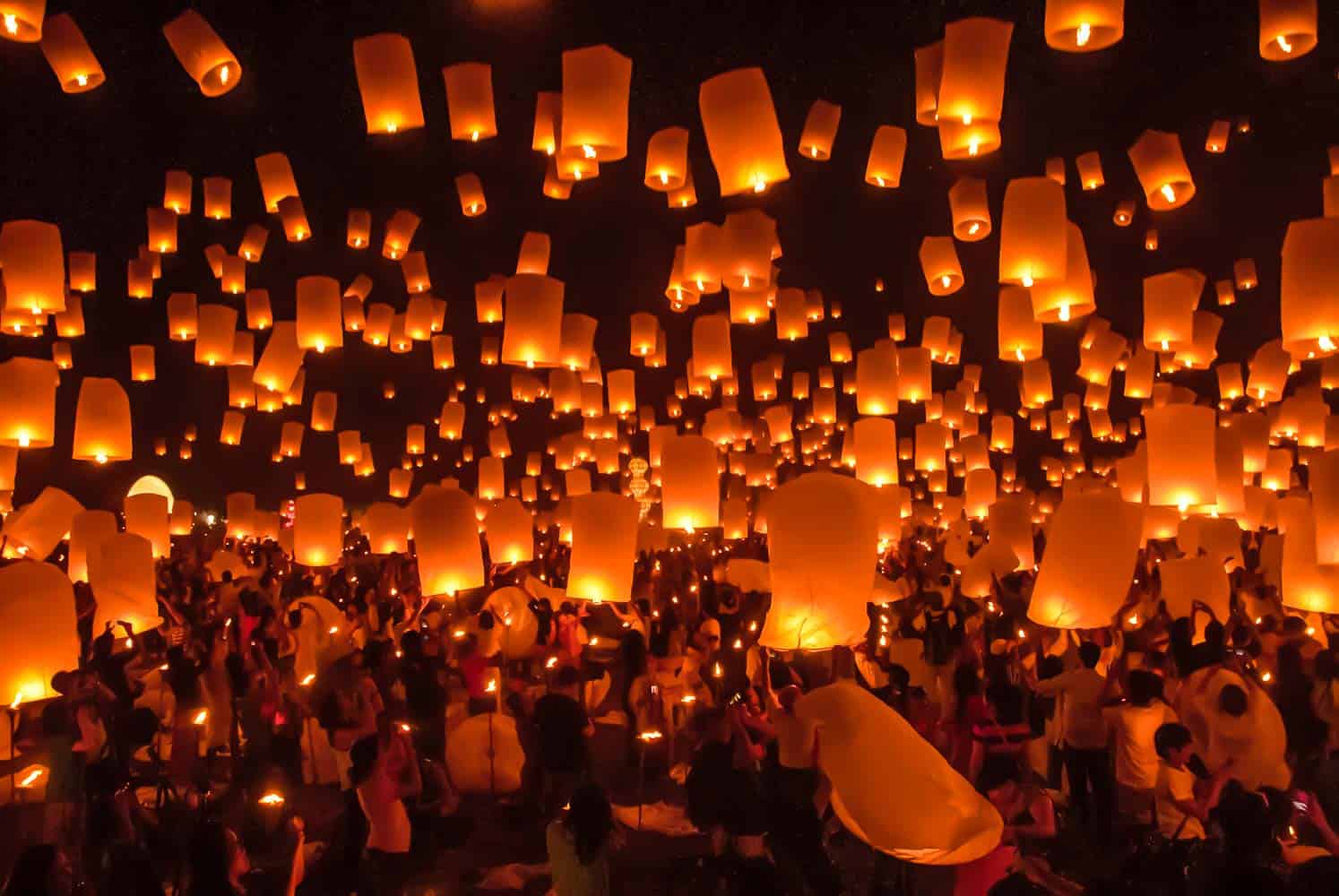Why Winter is the Best Time to Visit this Asian Digital Nomad Capital

When should you pack your bags for Chiang Mai, the cultural jewel of northern Thailand?
Having a long history with Chiang Mai, I first set foot in this city filled with 300+ temples back in 2012. Now, it’s become one of my home bases where I escape the cold winter months.
Trust me, there’s no better time to visit than between November and February. The weather is at its best, with a pleasant nip in the air at night and amazing festivals every month. In the 3 months I was there last year, it rained once!
Here’s a quick summary of why winter is the best time to visit Chiang Mai:
- Dry Season (Peak)
- Festival Season
- Best Weather
Next, let’s dive into the ups and downs of each season and a monthly climate breakdown. Whether you’re planning a quick visit or a longer stay, exploring the old city’s temples or trekking in the hills, these are the absolute best times to visit Chiang Mai.
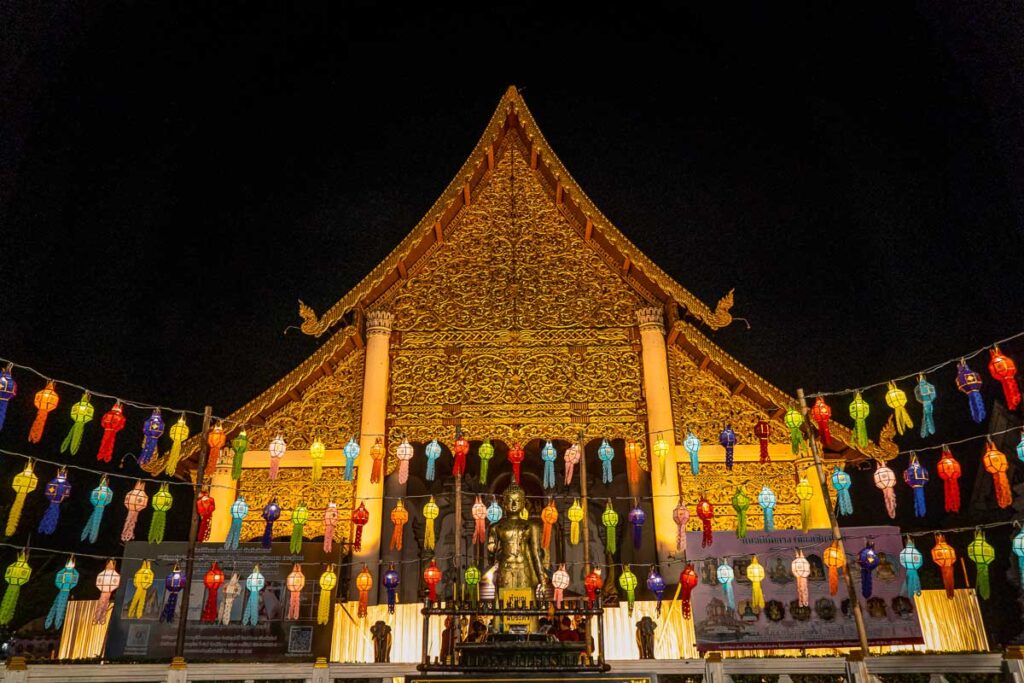
Best Time to Visit Chiang Mai
Weather in Chiang Mai can range from scorching hot summers to days on end of downpours to pleasantly cool winters. So, here’s a quick peek at the visitor seasons in Chiang Mai:
- Dry Season (Peak): November to February
- Wildfire Season: February to May
- Hot Season: March to June
- Rainy Season: July to October
Best Time of Year to Visit
In general, the best time to visit Chiang Mai is during the dry season, from November to February. During these months, the weather is perfect for exploring the city’s more than 300 temples, going to elephant sanctuaries and sticky Waterfalls, or taking trips to nearby Chiang Rai and Pai.
The incredible Loi Krathong and Flower festivals in November and February are the highlights of this season.
Best Month to Visit
November stands out as the best month to travel to Chiang Mai. This month hits the sweet spot of being in the dry season but not yet with the peak tourist crowds.
You’ll be able to find cheap accommodation, plentiful motorbike rentals, and look forward to the Lantern Festival later this month.
Best Time for Good Weather
For the most comfortable weather conditions, plan your trip to Chiang Mai during the dry season, between November and February. Expect clear skies, minimal rainfall, and pleasant daytime temperatures ranging from 25°C to 30°C (77°F to 86°F). You may even need a light jacket at night, but the cool nights perfectly complement the sunny days.
Best Time for Festivals
The dry season is the prime time for Chiang Mai’s best festivals. In November, you don’t want to miss the dazzling sight of the Loi Krathong festival, where thousands of candle-lit lanterns ascend into the night sky.
In January, the Chiang Mai Chinatown lights up during the Chinese New Year celebrations with food, dragon parades, and traditional music.
Come February, the city brims with color and fragrance during the Flower Festival, showcasing incredible floral floats and exotic orchids that Thailand is famous for.
Plus, with all the expats in the city, you’ll have no problem finding a group of new friends to celebrate Thanksgiving, Christmas, or New Year’s with.
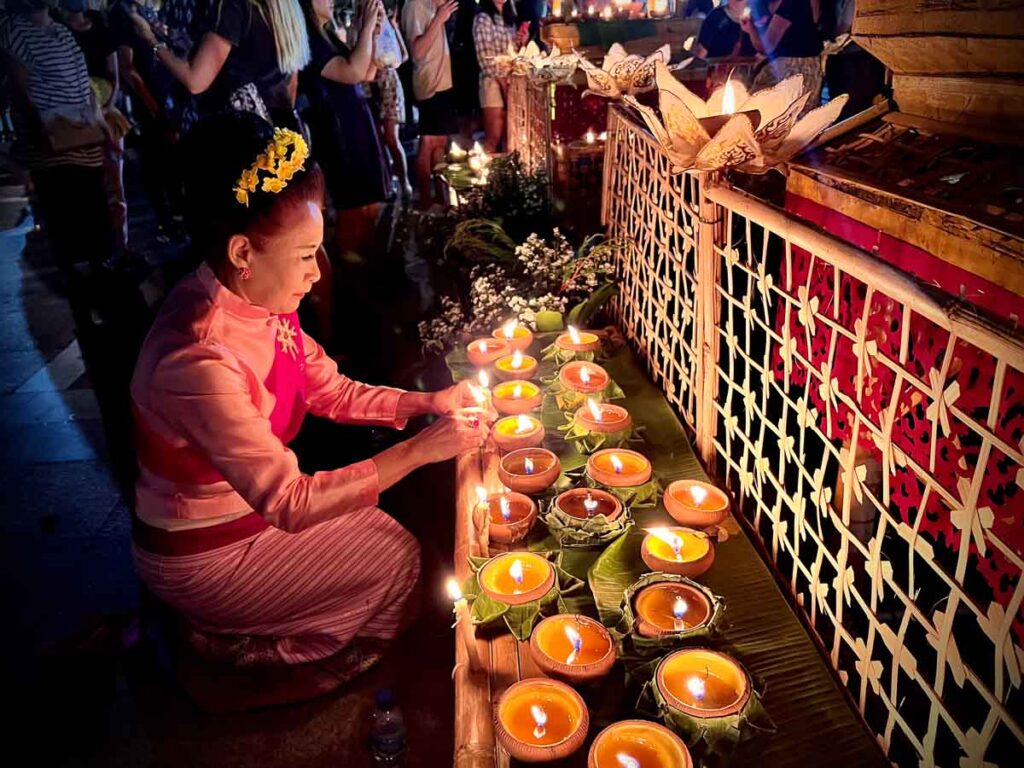
Best Time for Smaller Crowds
If you prefer a quieter, less-crowded Chiang Mai experience, come during the rainy season, specifically from July to October. Though you might encounter a bit of rain, many tourists stay away during these months.
According to tourism statistics, the number of visitors dips by about 30% compared to the peak season, which could mean having an entire temple almost to yourself on a lucky day!
Cheapest Time to Visit
For those on a budget, the rainy season from July to October is undoubtedly the most cost-effective time to explore Chiang Mai. Not only do you find significantly reduced accommodation prices (often up to 50% off compared to peak season), but airfare, local transportation, and activities can also be cheaper due to the lower tourist demand.
Worst Time to Visit Chiang Mai
The worst time to visit Chiang Mai is during the hot and wildfire seasons, from February to May. During this time, temperatures can skyrocket to 40°C (104°F) with humidity through the roof. Additionally, the wildfire season brings hazy conditions that affect air quality and visibility, and the attractions just don’t seem as, well, attractive.
If you’re coming now, it may be better to head down south to the islands, like Phi Phi, Krabi, or Phuket.
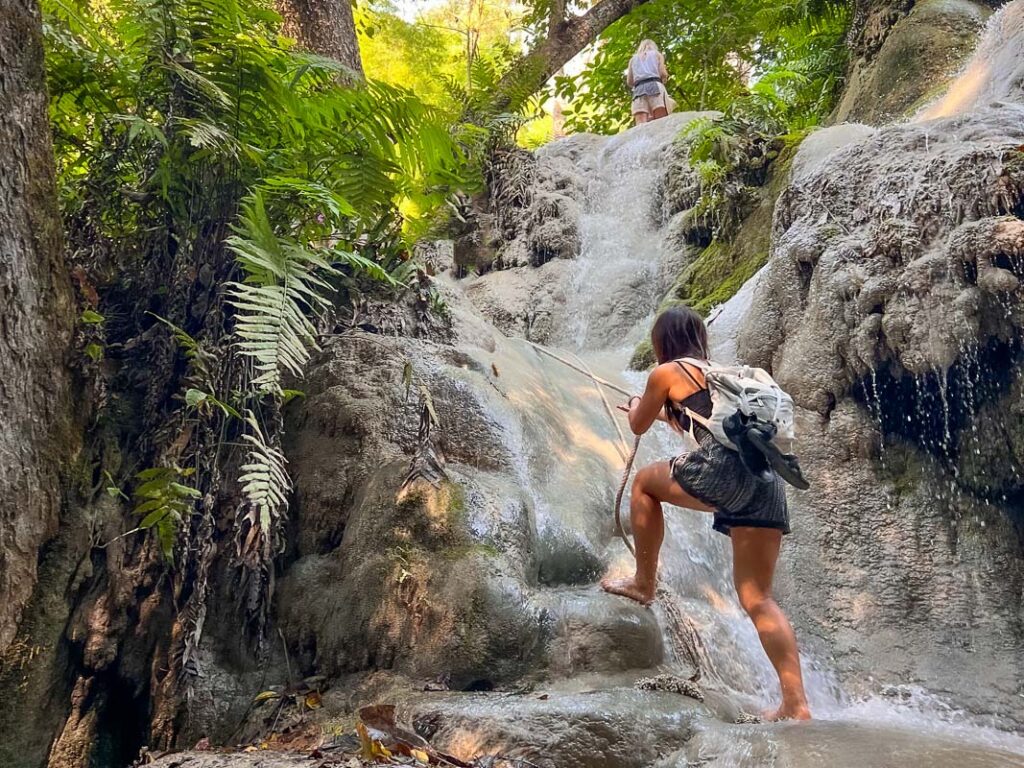
Seasons of Chiang Mai, Thailand
Dry Season in Chiang Mai (November to February)
The dry season in Chiang Mai, from November to February, is hands down the best time of the year. It’s a welcome break from the heat and relentless rain of the previous seasons. With daytime temperatures ranging from 25°C to 30°C (77°F to 86°F), this season is an absolute treat for visitors.
Having lived in the city throughout the dry season, I can tell you there are months with absolutely no rainy days. This means you’ll have plenty of clear and sunny days to explore, visit the ethnic hill tribes, or venture up north to the Golden Triangle. The nights in Chiang Mai during the dry season are wonderfully cool. Bring a light jacket to protect against the wind if you’re riding a motorbike.
One of the most extraordinary things about the dry season is the awesome festivals. Like the Loi Krathong festival in November, also known as the Lantern Festival. And in February, the floral floats of the Flower Festival parade through the city streets.
However, this is the peak tourist season. It’s got great weather and tons of cultural activities, but it also means lots of visitors. So, popular spots can get crowded, and accommodation prices are higher.
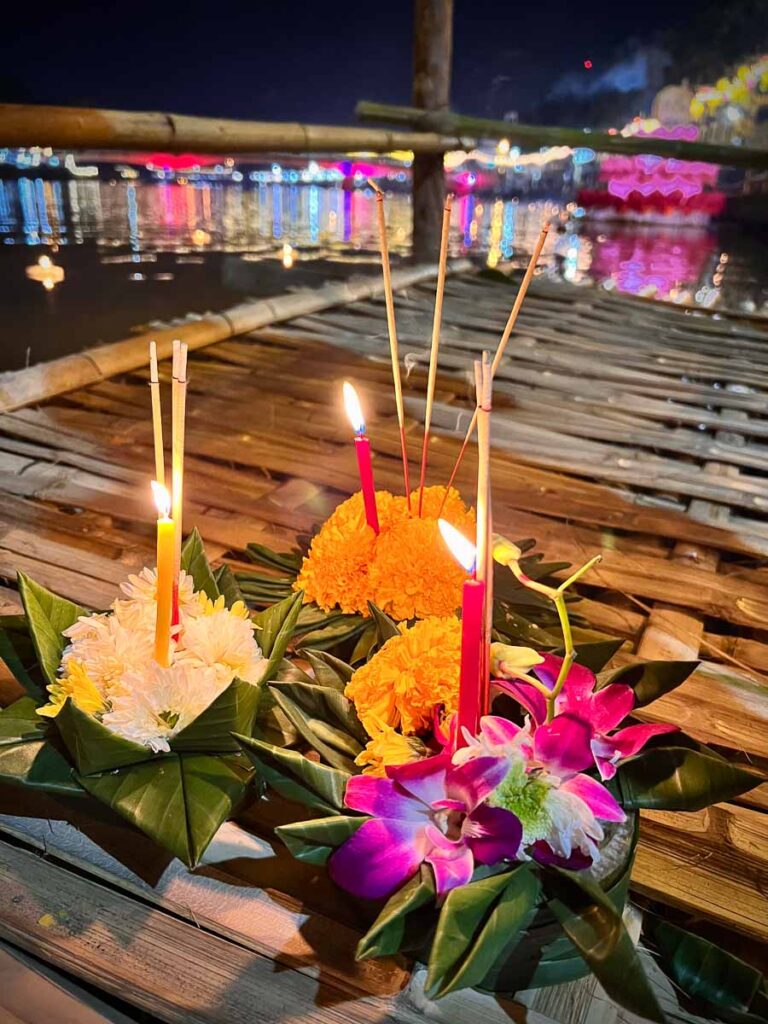
Wildfire Season in Chiang Mai (February to May)
Wildfire season in Chiang Mai typically kicks off in February and can go on for months. Unfortunately, farmers in the northern regions of Thailand practice slash-and-burn agriculture, resulting in smog and air pollution. This haze, known as “the burning season,” leads to poorer air quality and reduced visibility.
During the wildfire season, daytime temperatures can reach a sweltering 40°C (104°F). The heat and the smoky air make outdoor exploration tough, especially if you’re not used to such conditions. It’s a good idea to check the air quality index before heading out for the day.
Despite these challenges, the wildfire season clears out much of the crowds. Plus, the Songkran Festival, Thailand’s famous water festival, brings a celebratory energy to the city every April. And Chiang Mai is one of the best places to celebrate.

Hot Season in Chiang Mai (March to June)
The hot season in Chiang Mai can be quite an intense experience as it’s exacerbated by the wildfires. During this time, temperatures can rocket to a sizzling 40°C (104°F). Yes, it’s hot, but don’t let that deter you. The day’s heat can pack a punch, but the early mornings and late evenings offer a more bearable climate.
One of the season’s highlights is the Thai New Year, or Songkran, in April. The city plunges into a massive, joyous three day water fight as a way to cool off and celebrate the new year.
Due to the high temperatures and hazy conditions, the hot season attracts fewer tourists, as many prefer heading down south for bluer skies.
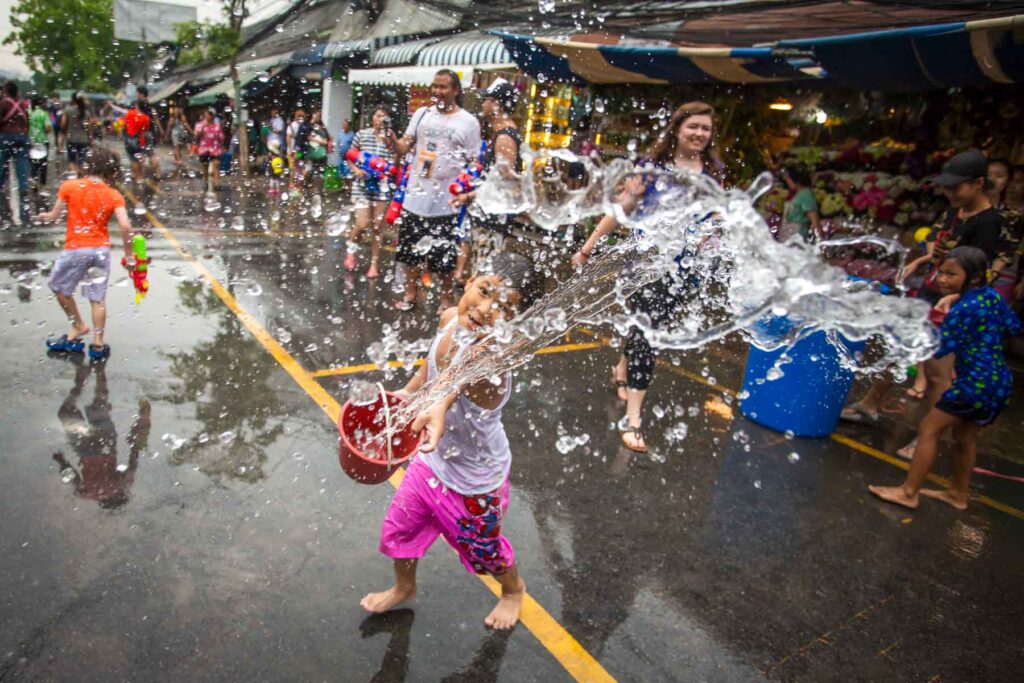
Rainy Season in Chiang Mai (July to October)
The rainy season in Chiang Mai has its pros and cons, but one thing’s for sure – it really brings this tropical cityscape to life! The landscape transforms into a lush, green paradise, with the mountains and fields wearing a vibrant hue that’s absolutely breathtaking. The city’s waterfalls are at their most powerful during this time too!
Now, when we say ‘rainy season,’ don’t picture non-stop downpours 24/7. The rain, while frequent, usually manifests as heavy but short-lived afternoon showers, often followed by clear skies. With a bit of careful planning, you can maneuver around the rainfall and continue with your adventurous itinerary.
On the plus side, the temperature during this season is relatively milder, averaging between 25°C to 30°C (77°F to 86°F).
It’s worth mentioning that the rainy season lines up with the less crowded tourist period. That means you’ll find fewer people at the popular spots and cheaper prices for accommodation and flights. It’s a win-win if you’re on a budget or prefer to do indoor things like a Thai cooking class or cafe-hopping.
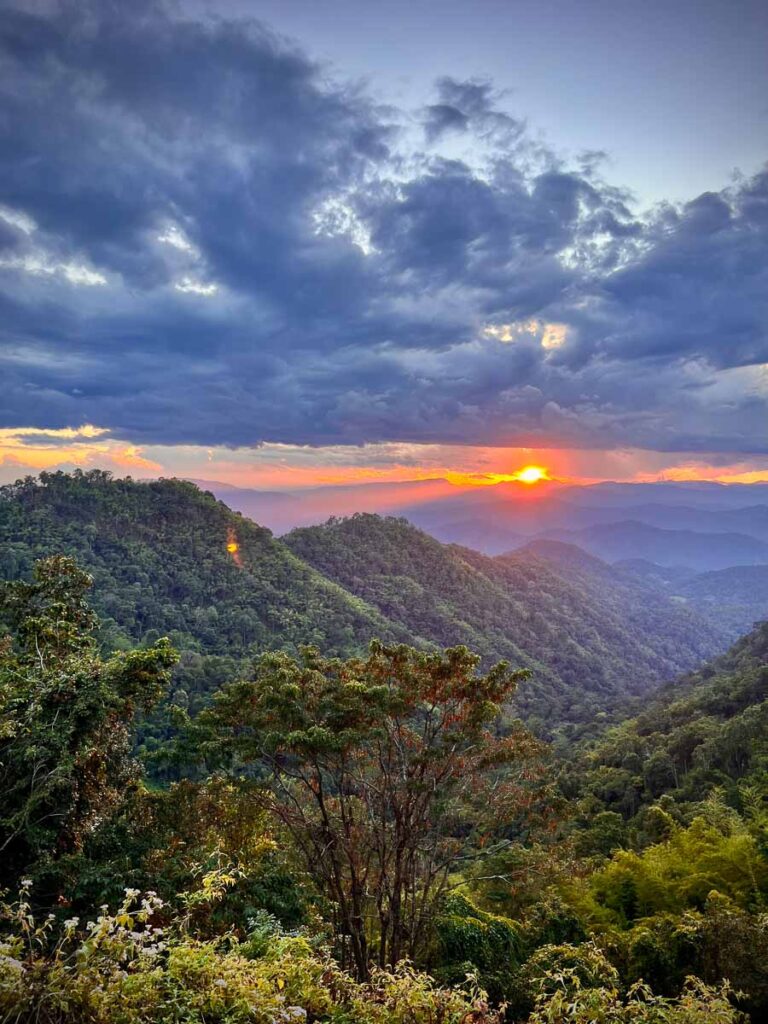
Chiang Mai Monthly Weather
Here is a month-by-month breakdown of the average high and low temperatures and precipitation at Chiang Mai
| Month | Avg. Low Temp (°F) | Avg. High Temp (°F) | Precipitation (in) | Humidity (%) |
|---|---|---|---|---|
| January | 59.8 | 81.3 | 0 | 64% |
| February | 64.2 | 87.5 | 0 | 52% |
| March | 69.5 | 92.2 | 0 | 48% |
| April | 74.7 | 95.1 | 1 | 50% |
| May | 74.7 | 89.4 | 4 | 70% |
| June | 74.2 | 86.1 | 5 | 79% |
| July | 73.6 | 84.6 | 7 | 82% |
| August | 73 | 83.4 | 9 | 86% |
| September | 72.1 | 83.7 | 9 | 86% |
| October | 69.6 | 83.2 | 4 | 83% |
| November | 64.5 | 82.3 | 0 | 75% |
| December | 59.3 | 79.8 | 0 | 70% |
Before you Leave…Read More about Chiang Mai
I’ve been to Thailand 10+ times and now spend my winters here. Check out these other Chiang Mai posts to help plan your trip!
- 9 Best Cooking Class In Chiang Mai, Thailand With Local Chefs
- 7 Best Tours To Chiang Rai From Chiang Mai, Thailand
- Grand Canyon, Chiang Mai: A No FOMO Thailand Visitor’s Guide
- Bua Tong Sticky Waterfalls, Chiang Mai: A No FOMO Thailand Traveler’s Guide
- Chiang Mai To Pai: Guide To The Best Road Trip In Thailand
- Bangkok vs Chiang Mai: Which City Is Better?
| TRAVEL RESOURCES |
| ✈️ Find the best tours and activities with Viator to cross off your bucket list and create unforgettable memories 🏘️ Book your accommodation with Booking.com in advance and check availability on the days of your travels. 🧾 Rent a car in advance with Discovercars for those epic road trips at the best price. 📓 Safety first! Insure yourself with Safety Wings nomad travel insurance for $45/month for all your adventures and activities abroad. |

